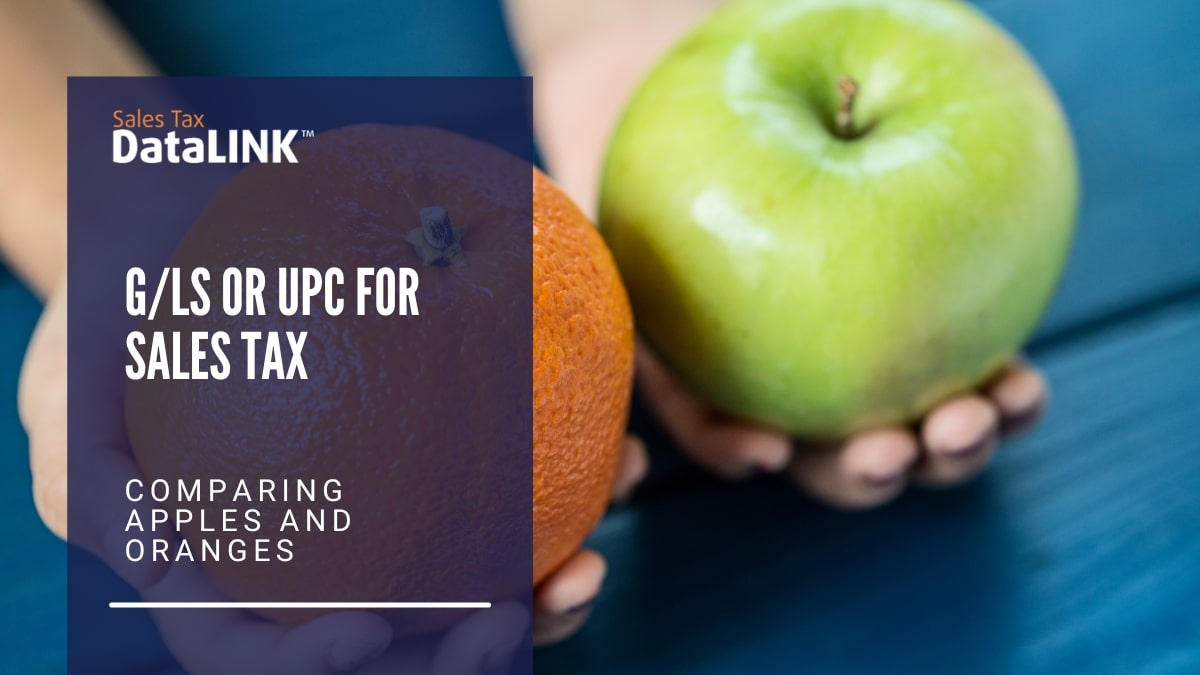There are two basic methods for determining the taxability of an item for sales and use tax and using either one has advantages and disadvantages. To understand this example, we’re going to talk about the taxability of apples and oranges in an imaginary tax jurisdiction where a grocer and megastore sell them to customers. In this sales tax jurisdiction, apples are taxable but oranges aren’t and both stores want to make sure they’re collecting and filing sales tax correctly. Since he’s a small grocer that carries a limited range of items, he’s only got around 300 or so UPC codes in his store. It’s relatively easy to keep track of it all and so he determines taxability by his UPC codes on the items he carries.
Apples have one rate and oranges have an exemption but he knows all of this information and uses it to collect and file his sales tax. The solution is just the right size for his store. Down the street, there’s a megastore with hundreds of thousands of UPC codes. There are so many aisles that a single one might contain as many UPC codes as the whole store of the grocer down the street. Apples and oranges are just one of many different taxability situations and it can be pretty tricky to determine them all. The sheer amount of data and amount of digital space that data takes up would be very costly for the megastore so they use a different system. In their general ledger, they have all the information they need about the taxability of apples and oranges because of the way they organize their purchasing. Instead of relying on hundreds of thousands of pieces of data, they rely on about 300 or so general ledger accounts that they use for purchasing different items of different taxability.
These two examples are really simplified versions of how your company might determine taxability. It all comes down to the right-size solution for your data. UPCs can provide a lot of information about a product but can be burdensome and small stores might not have general ledger accounts. But the root of the issue really begins with how laws determine taxability. Laws look at the nature of the item and whether it’s taxable or not. For instance, you might have three or four different kinds of apples or oranges but the law sees all those varieties as the same. They are either taxable apples or exempt oranges in the eyes of the auditor. Whatever your solution to determine taxability, it should answer the ultimate question to determine tax rates: what is the nature of the item?




